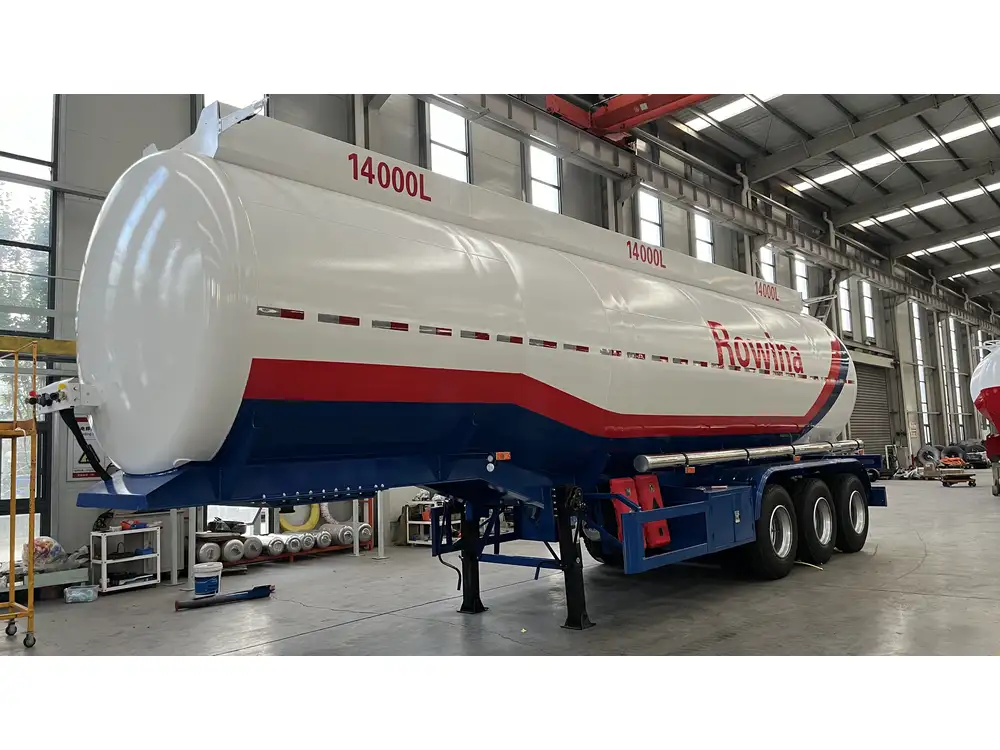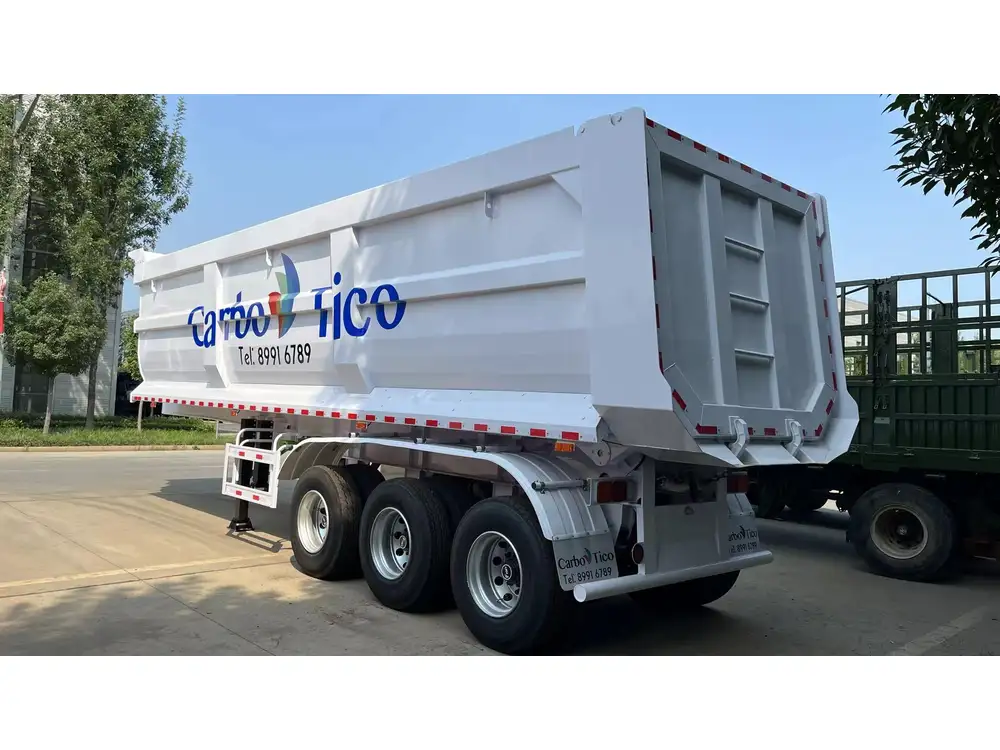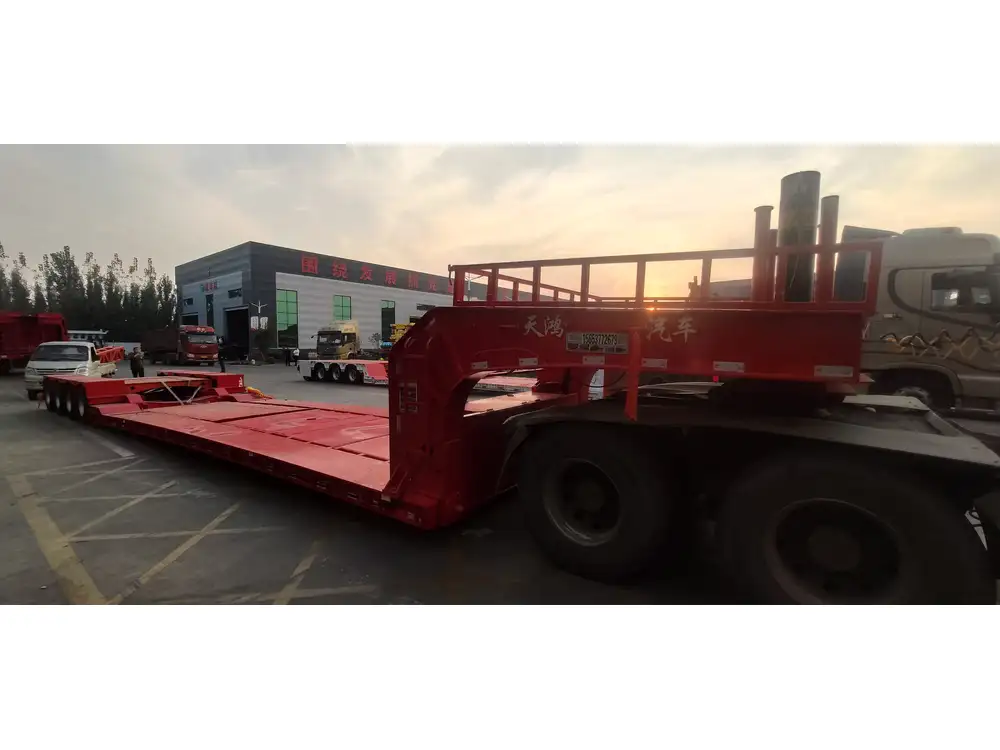When it comes to construction, landscaping, or large-scale earth-moving projects, one versatile tool that stands out is the dump trailer. Its capacity for transporting heavy materials such as gravel, dirt, and, of course, large rocks is unrivaled. This article dives deep into the costs associated with dumping a trailer full of large rock, dissecting every factor that influences pricing—from the market price of the rock itself to transportation and operational costs—allowing readers to make an informed decision.
Understanding Dump Trailers
What is a Dump Trailer?
Dump trailers are specially designed vehicles that allow for the quick and efficient unloading of bulk materials. Unlike flatbed trailers, dump trailers have a bed that can be lifted to dump the contents out, making them ideal for transporting heavy and loose materials. They are commonly used in construction, landscaping, and waste management, making them indispensable in various industries.

Types of Dump Trailers
Belly Dump Trailers: These trailers provide a unique option for unloading materials through the underside, allowing for controlled spreading of materials like gravel or sand.
End Dump Trailers: The most common type, featuring a rear-end dump mechanism that raises the trailer’s front to unload materials quickly at a specific location.
Side Dump Trailers: These trailers offer the ability to unload materials from the side, which is useful in certain applications where space is constrained.
Understanding these types helps in choosing the right trailer for a project, impacting overall costs.
Factors Affecting Cost
1. Material Costs

Market Price of Large Rocks
The cost of large rocks can fluctuate significantly based on:
Type of Rock: Different types of rock (e.g., granite, limestone, basalt) have varying costs due to their source availability and demand. For example, granite is typically more expensive than limestone.
Size and Weight: Larger rocks often command a higher price. The weight of the rock can influence shipping fees.
Location: Proximity to the quarry can decrease transportation costs. Prices can vary regionally based on local supply and demand.
Price Table for Various Types of Large Rocks:
| Type of Rock | Price per Ton | Availability | Uses |
|---|---|---|---|
| Granite | $120 – $240 | Limited Availability | Countertops, Landscaping |
| Limestone | $50 – $100 | Widely Available | Construction, Aggregates |
| Basalt | $80 – $150 | Moderate Availability | Road Base, Construction |
| River Rock | $60 – $120 | Varied Availability | Landscaping, Erosion Control |
2. Transportation Costs
Hauling Fees
The cost associated with transporting a dump trailer full of large rocks is influenced by several factors:
Distance: The farther the location of the rock source from the site, the higher the transportation fee. Long-distance hauls not only incur fuel costs but also driver wages.
Payload Capacity: A standard dump trailer can carry between 10,000 to 14,000 lbs. Understanding your payload capacity determines how many trips would be required, impacting overall costs.
Fuel Prices: Fluctuations in fuel prices can significantly affect transportation costs. It’s essential to factor in this variable when budgeting for a project.

3. Rental or Purchase Costs
Owning a Dump Trailer vs. Renting
When calculating the total cost of a dump trailer full of large rocks, you should consider whether you will rent or purchase the trailer.
Purchase Costs: A new dump trailer can range from $5,000 to $30,000, depending on size and features. Maintenance, insurance, and depreciation also factor into ownership costs.
Rental Costs: Renting a dump trailer typically costs between $100 and $300 per day. The duration of the project can influence whether renting or purchasing is more economical.
4. Disposal Fees
When acquiring large rocks, it may become necessary to dispose of unwanted materials. Local waste management facilities often charge disposal fees. It’s prudent to check these fees ahead of time to avoid unforeseen expenses. Typically, these fees can range from $30 to $100 per ton.

Sample Cost Analysis
To put all the aforementioned factors into perspective, let’s run a typical cost analysis for hauling a dump trailer full of large rock.
Example Scenario
Project Requirements:
- Transporting 10 tons of granite rock from a quarry 20 miles away.
Cost Breakdown:
Material Cost:
- Granite (10 tons) @ $200/ton = $2,000
Transportation Cost:
- Hauling fee (20 miles) @ $3/mile = $60
- Total Transportation = $60
Rental Cost (if applicable):
- Rent a dump trailer for a day = $200
Disposal Fees (if applicable):
- Unwanted materials (2 tons) @ $50/ton = $100
Estimated Total Cost:
- Material Cost: $2,000
- Transportation Cost: $60
- Rental Cost: $200
- Disposal Fees: $100
Grand Total: $2,360
Additional Considerations

Project Complexity
The complexity of the project can also influence costs. If the site has difficult access or requires additional labor for unloading or spreading materials, these factors can add to the overall budget.
Timing and Seasonal Costs
During peak construction seasons, demand for dump trailers may increase, leading to higher rental costs and material prices. Planning your project during off-peak times can yield cost savings.
How to Optimize Costs

1. Bulk Buying
Purchasing large quantities of rock at once can lead to bulk pricing discounts. Building relationships with suppliers may also provide you with negotiation leverage for better rates.
2. Efficient Routing
Utilizing an efficient routing system for transportation can minimize fuel consumption and time, leading to reduced costs. Modern GPS systems can help in planning the most cost-effective routes.
3. Equipment Maintenance
If you own a dump trailer, ensuring it is well-maintained can help avoid costly repairs and downtime that would delay projects.

Conclusion
Understanding the full scope of costs associated with transporting large rocks in a dump trailer is crucial for project planning. By carefully considering material prices, transportation fees, potential rental or purchase costs, and disposal fees, project managers can gain a comprehensive view of their expenses.
With this knowledge in hand, you can make better, informed decisions that not only optimize project efficiency but also significantly impact your bottom line. One might think that the immediate costs are clear-cut, but it’s the hidden costs and additional factors that, when meticulously analyzed, can reveal deeper insights into budgeting and planning.
Discover the advantages of working with experienced manufacturers of semi-trailers who provide not just quality products but also a wealth of knowledge to help you navigate your project’s needs. If you’re in the market for trailers or require tailored solutions, consider consulting with industry professionals who can guide you based on your specific needs and budgetary constraints.



